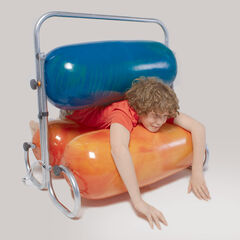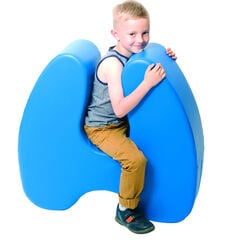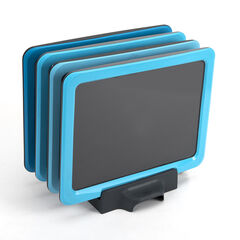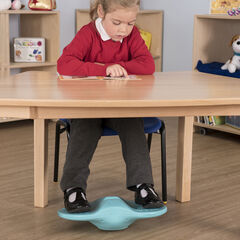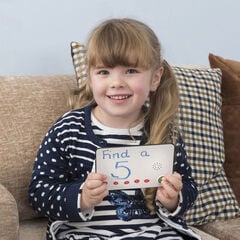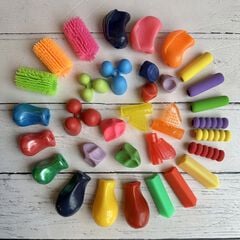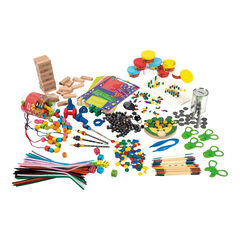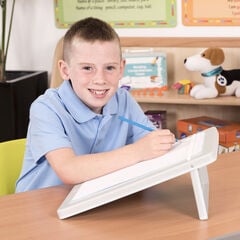Movement as ‘Miracle Grow’ for the brain
Learning readiness is built on a strong motor foundation, movement is the anchor! Once a child’s body and brain are adequately prepped, they are ready to learn and learning becomes more automatic. I like to think of movement as “miracle grow” for the brain.
Movement nurtures and supports academic learning (including reading and writing), but also, more importantly, develops a child’s emotional self-regulation, problem solving, curiosity, confidence, resilience and risk awareness skills.
Essential movement elements
Essential movement elements for learning readiness (we’ll cover in more detail throughout this blog with resource suggestions to support):
- Spatial and Body Awareness
- Balance and Coordination
- Strength and Endurance
- Posture
- Risk and Safety Awareness
All 5 areas are interdependent, so you can support several movement elements with a single activity or resource. Great to know in busy environments and with limited budgets!
The role of the senses
A note on senses too. Vision and hearing are particularly important for motor foundation. For example, we know how it’s harder to balance with our eyes closed or the feeling of being disorientated with an ear problem.
If you are concerned about any aspect of a child’s development, early referral is recommended – for example to physiotherapy, occupational therapy, speech therapy, audiology, ophthalmology, health visitor, paediatrician or educational psychologist.
Early intervention and movement throughout the day best help a child to reach their full academic and fulfilled-self potential.
Movement knowledge
Spatial and Body Awareness
The ability of a child to know the “edges of their body”. This enables them to be able to use both sides together (doing the same actions or different) to perform complex gross and fine motor skills (e.g. reading, writing, cutting) . This also supports them in being able to judge distances, direction and physical pressure in relation to objects and people. It’s a sense of self, space and surroundings. Resources such as the Sensory Squeeze Machine , Body Balance Ball Fitness Set and the Squeeze Seat can help by giving a sense of calming deep pressure and “edge of body.
Writing requires huge amount of body and spatial awareness in term terms of hand dominance, crossing the midline of the body, positioning of paper and pencil on the paper, pressure through it, direction of letters – up, down, forwards etc, and stabilising the paper with supporting hand. Reading requires eyes to track across the midline and sense of direction to follow words. The Sensory Illuminated Mark Making Boards offer a great variety of options to practice midline crossing, eye tracking and hand/finger movements.
Balance and Coordination
These work in parallel. Balance is the ability to maintain a controlled body position while performing a task. This can include sitting at a table, walking along a beam or stepping up a kerb. Coordination is the ability to perform smooth, accurate, efficient movements such as using the correct muscles at the correct time and intensity for successful hoping, catching or writing within lines etc.
Children need postural stability and core muscle control to stabilise their trunk/body which enables them to move their arms, hands, legs, and feet separately in balanced and coordinated ways. Some children, depending on their individual nervous system, may need to regularly move and adjust their position to concentrate and perform to their best. Resources such as Fidgety Feet and Happy Feet Textured Play Mats are great for supporting in this area.
Motor planning is also important for tasks to be performed in coordinated ways. Memory, including following and remembering instructions, plays a big part in motor planning and sequencing. Recordable Talk-Time Cards and Sound Lights provide clever ways to record simple instructions.
Strength and Endurance
In practical terms, muscle strength is how strong a child is and muscular endurance is how long the child’s muscles can work for. Strength and endurance are important to enable children to perform everyday functions, such as fine motor skills (e.g holding a pencil appropriately, directing a toothbrush) and gross motor skills (e.g. climbing, running, hitting a ball). Muscular endurance helps maintain health posture all day long and reduces fatigue with associated loss of concentration. Resources such as Get a Grip Pencil Grips, Hand and Finger Muscle Strengtheners and the Fine Motor Skills Activity Box can really aid hand/finger strength and endurance.
These resources will be even more effective if combined with activities to improve shoulder stability (eg. movements in a crawling position or rolling forwards over an object such as the Sit On Peanut Shaped Balance Ball.
Improving strength and endurance also contributes to a higher metabolism which helps reduce obesity. Additionally, stronger tendons and ligaments reduced the chance of injury. The key muscle groups to focus on are: core (stomach and back), and the shoulders and hips.
Posture
There are two types of posture:
- Static (e.g. when sitting, standing or sleeping)
- Dynamic (e.g. how a child holds and adjusts themselves when moving e.g., running, walking, writing, or bending over to pick something up).
- A healthy posture gives an excellent base for healthy movement and is closely linked to strength and endurance, balance and coordination.
Maintaining a natural upright posture aids digestion, breathing, and brain oxygenation, improving energy levels, focus, and concentration – particularly useful after lunch and while performing high-level motor skills such as writing. Good posture supports learning, boosts self-esteem and is an important part of a child’s longer-term health and wellbeing (especially musculoskeletal health).
Resources which can support healthy posture include: Foldable Writing Slope, Jolly Back Floor Chair and those in the Jolly Back Range and the Posture Sit On Wedge.
Risk and Safety Awareness
Babies and children learn by being exposed to appropriate risky play or “safe danger”. These are not dangerous activities but a “safe as necessary way”. They encourage problem solving and curiosity through body movement, sensory integration and self-awareness (dependant on a child’s individual developmental level).
Learning through movement and through mistakes increases a child’s resilience, engagement, health and automatic academic learning, particularly through problem solving and inspired curiosity. Great resources that support children in this area include the Sit On Peanut Shaped Balance Ball and the Pikler Inspired Climbing Set.
Many thanks to Lorna Taylor, Chartered Paediatric Physiotherapist for writing this blog.
















